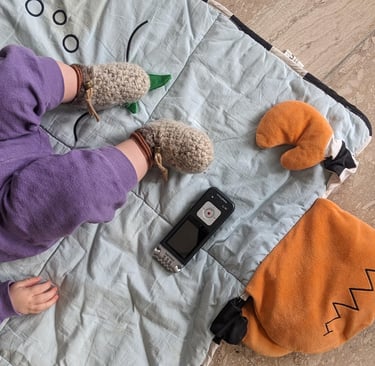Adapting focus group formats to different audiences
6/1/20242 min read


Adapting focus group discussions to different audiences
In my previous blog, I reflected on how incorporating painting into my focus groups may have influenced participation—attracting those who were comfortable with creative activities but potentially deterring individuals who aren’t drawn to painting.
After conducting the first four focus groups, I reviewed the demographic profiles of the participants and noticed gaps in representation. To address this, I used purposive sampling, a method in which researchers intentionally select participants who fit specific criteria relevant to the research questions.
At this point, I began collaborating with the brilliant sexologist Evelien Luts. Evelien’s insights and network were invaluable in helping me identify and recruit participants for three additional focus groups:
Women who had recently become mothers (again).
Men.
Women aged 50 and above.
Why Adaptation Was Necessary
For these groups, painting wasn’t always a practical or preferred activity. Evelien and I worked together to adapt the format of the focus groups to suit each audience’s needs and preferences.
The New Mothers
Painting wasn’t a practical option for new mothers because they already had their hands full (literally!) with their babies. So instead, we organised a daytime session where mums could bring their babies along. We made sure there was plenty of space for prams, baby supplies, and a comfy area for feeding or changing. Knowing how much new mothers have on their plate, we provided lunch to make things as easy and enjoyable as possible. This small gesture helped create a relaxed and welcoming atmosphere.
Of course, babies being babies, there were moments of babbling and even some crying during the session. To manage this, I placed multiple audio recorders across the room to ensure I could capture the mothers’ voices over the baby chatter. Transcribing the recordings was still tricky at times, especially with the background noise, but doing it as soon as possible after the session made it much easier to recall what was said and figure out anything unclear.
This session reminded me how important it is to adapt to people’s needs. Sometimes, making small changes—like providing lunch or creating a baby-friendly space—can make a huge difference in helping people feel comfortable, included, and willing to share their thoughts.
The Men and Women over 50
We approached the men and women aged 50 and above with the option to include painting as part of the focus group. However, both groups expressed a preference for an evening setting with drinks and snacks, and without painting.
What I Learned from Adapting
Adapting the focus groups to different audiences reinforced an important lesson: there is no one-size-fits-all approach to research. People have different needs, preferences, and comfort levels, and tailoring methods to suit your audience can yield richer, more meaningful data.
The adaptations also highlighted the importance of flexibility in research design. For example:
For the mothers, creating a convenient space and offering lunch made it easier for them to participate.
For the men and older women, offering a setting they found comfortable facilitated engagement and made the discussions more dynamic.
These adjustments didn’t just make participation more appealing—they also demonstrated respect for the participants’ time, circumstances, and preferences, which is crucial when discussing personal or sensitive topics. Research is a two-way process. While participants contribute their stories and perspectives, researchers must create environments that allow these contributions to flourish.
